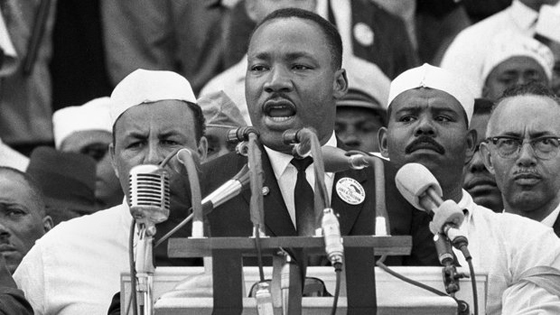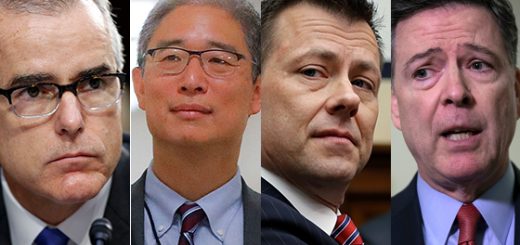Paying on both ends.

Click here to listen to the broadcast of You Tell Me on KTBB AM & FM, Friday, Nov. 4, 2011.
On October 26th, President Obama gave a speech in Denver. He was speaking to college students and in that speech, he promised to advance a plan to reduce student loan payments and to forgive outstanding student debt after 20 years.
On the very same day, in the very same city, the University of Colorado announced a nine percent increase in tuition. The irony is almost too much to take.
The government has now guaranteed more than a trillion dollars in outstanding student debt. The average tuition at a four-year public university has more than doubled in the past ten years. That’s no mere coincidence. It is a cause and effect relationship.
For the vast majority of Americans, there are now two stages of life in which the amount of money required to meet a basic need is far in excess of the resources of all but the wealthiest households.
The first is college. After World War II, the tuition at a typical private university cost about a month’s pay for a middle class family. Today, the tuition for that same university can consume more than a year’s pay.
In order to afford a college education, most students are borrowing money. A lot of money. As a result, the typical college graduate leaves school owing about $27,000. That debt is on the shoulders of young men and women just as they enter adulthood and just when they are the most financially vulnerable.
As the classes of 2008, 2009 and 2010 are learning, there aren’t a lot of jobs out there to provide the income to pay those loans back. The higher earnings that are implicit and explicit in the justifications for getting a college degree just aren’t there right now. Unless the economy improves very dramatically, very soon, expect to hear news stories in the not-too-distant future talking about the economic impact of rising student loan defaults.
The second stage in life in which costs can vastly outstrip resources is after retirement when the need for health care rises dramatically. Most Americans don’t have the resources to pay for a major health event such as a heart attack, a heart bypass, a hip replacement or a serious disease such as cancer. Most older Americans don’t have the monthly cash flow to pay for their prescription medicines.
Health care delivery now costs so much that even routine visits to the doctor can be prohibitive. One of the greatest fears of people in their 50s and early 60s is losing a job – not just for the loss of income, but for the loss of health insurance.
With the exceptions of college and health care, the cost for just about every other service we buy has come down. So why are college and health care the exceptions?
Simple. The government distorts the market for college education and health care by removing price sensitivity at the point of purchase.
Federally guaranteed student loans have served to make every enrolling freshman rich from the perspective of a college admissions officer. Enrolling students happily follow the advice of college financial assistance counselors in applying for federally-guaranteed loans, figuring that they won’t have to the loans back for a long time. The price sensitivity that governs most purchases is numbed by the easy availability of debt, a fact made possible by the government’s student loan program.
The same is true for health care. Between employer health plans, a legacy of government wage controls in World War II, and government programs like Medicare, the actual consumers of health care services are insulated from direct financial impact and thus offer little resistance to rising prices.
With the best of intentions, the government has become the driving economic force in both higher education and in health care. In both cases, costs are out of control.
LCD TVs, cell phones and personal computers, however, are not financed by the government. All have come down in price.
The lesson is unavoidable.








Your comments, “After World War II, the tuition at a typical private university cost about a month’s pay for a middle class family. Today, the tuition for that same university can consume more than a year’s pay.” and “Federally guaranteed student loans have served to make every enrolling freshman rich from the perspective of a college admissions officer.” together encapsulate the problem caused by government in higher education. Had government not interjected itself, a college education would still be within the reach of the average young person AND they would be graduating with little or no personal debit (as I did in the 1960s). After graduation, in great part because I had no personal debt, I was able to start my own business. We started 30 years ago with one employee, me, and we now employ over 100 people. That’s 100 more real jobs than Obama ever created. Things might have been very different had my wife and I been saddled with massive student loan obligations.
As one of the 50 to 60 year olds you mentioned as fearing a loss of a job and health care coverage, I can tell you for a fact that fear is very real. In March, my job will be eliminated as will be for all the others I am working with and all the ones working at several other centers in other states. It will not be easy for those of us nearing 60 to find other jobs since most jobs now are part time with little or no health care coverage. I can not blame the businesses because with this president no one can have any security in knowing what to expect in cost with this obamacare debacle. What I do know about obamacare, it is not to make healthcare coverage affordable for the employer or the people not having coverage! One thing I never understood was the obama administration mandating that everyone buy health insurance when one reason they didn’t have it in the first place was the COST. In what I have read about the obamacare package is it will be no more affordable in 2013 than it is now. In fact, it will be more costly…for everyone!
With the college costs and the student loans, only one thought comes to mind about the “forgiving” of the student loans. In order to “forgive” the loan, the student will have to work off the loan for a period of time, doing a job in a place approved of only by the government. These things are in place now and have been but on a volunteer basis. I surmise that in the future these loan forgiveness solutions will no longer be volunteer but mandated in order to remove the debt. There are no free rides in life, you end up paying for it in one manner or the other and to expect otherwise is like believing in the Easter Bunny or Santa Claus.
The only solution I can see to the problem is to remove government control in education and healthcare. Ever since I can remember, education has been a prime target in elections and no matter HOW MUCH money is thrown at education, the children are NOT being educated! I have seen it when I was in school. My Grandmother only had an 8th grade education yet she knew a whole lot more than I did at graduation. I have noticed it from generation to generation that the education system has a lot to be desired. With healthcare, a simple solution of tort reform and getting the government fingers out of it would lower cost and improve the care we get. Now we are herded in and out like cattle with the doctors never having a real relationship with their patients as they once did. It doesn’t have to be this way!
Paul,
You are right to equate third party payer (government) with out of control price increases since normal market forces (capitalism) between buyer and seller are eliminated. When the citizen requires a government handout or loan to afford a service due to government-induced price inflation, is it not proper to conclude that this is deliberate and another way to create an indentured servant out of the citizen himself?
We have been told by the anti-capitalistic forces in the government for decades that they are smarter and better equipped to handle the basic needs of the poor population (food, shelter, clothing, etc.) by expanding the Welfare State. Now, they have a golden opportunity to expand the Welfare State to include Secondary Education and Heath Care since their actions have made the purchase price out of reach for all but the super-rich. What a brilliant scheme to spread the Welfare State to the Middle Class and the Retired population. Do you see a trend here?
My conclusion is obvious. The anti-capitalistic forces in higher education and in government realize the huge power in creating a class of indentured servants in the general population, beholden to government largesse in order to survive. Just think of the power to control the lives of these people and the pro big-government voting block that it represents. This is not government philanthropy; it is the action of a new type of MOB to control a population. “MOB” is my acronym to describe the Marxist Obama Battalion that represents the current state of affairs in the present Federal government, the attempt to permanently institutionalize Socialist/Marxist dogma throughout the Administrative State.
As we approach national bankruptcy with the astronomical debt that the MOB is creating, inflation will undoubtedly destroy the wealth of the Middle Class and the super-rich, also. The MOB wins in the end if we can’t destroy it before it destroys us. A growing and thriving Middle Class is the best antidote to the MOB. Is the American spirit of Liberty still considered priceless and unwilling to be sold into slavery?
The Marxist Obama Battalion (MOB) analogy works for me. It is too bad the Medical profession and Health Care Industry doesn’t understand how the MOB works. Let’s have a contest to see how many MOB organizations or advocates we can name. I’ll start.
Organizations:
ACORN, Occupy Wall Street Movement, Center for American Progress, MoveOn.org, Democracy Alliance, ACLU, Organizing for America, NAACP, AFL-CIO, Service Employees International Union (SEIU), La Raza, the American Federation of State, County and Municipal Employees, the American Federation of Teachers (AFT), Rainbow Push Coalition, National Education Association (NEA), Green Energy companies destined for bankruptcy.
MOB advocates in and out of government:
Michael Moore, George Soros, Cass Sunstein, Van Jones, Eric Holder, Richard Trumka, Nancy Pelosi, Harry Reid, Elizabeth Warren.
Guess how many of these organizations are 501(C)(3) tax exempt and are funded by compulsory union dues or funded by government handouts via Obama Stimulus funds. Organizations that participate in political advocacy cannot be legally tax exempt, but the MOB organizations are above the law.
Why didn’t the Medical profession create a MOB union and protect their interests? Thankfully, the vast numbers of Doctors are not Socialists and hate what is happening to Medicine – becoming a servant of the State instead of caring for the patient.
The MOB gets its “protection payments” via union dues and thereby grants “territorial right to work rules” in order for anyone to stay in business (NLRB – Boeing 787 in South Carolina). This is the new Obam-Amerika we are supposed to appreciate as we get our revenge on those Rich Capitalist Pigs that have raped the world at large.
Obama Stimulus = Payments to Comrades = Corruption without a Conscience.
I hope the next administration hauls these people/organizations into a nationally televised corruption trial in Congress.
Please see the following link for Paul’s comments on June 24, 2011, “The favor of the royal court”, to explain my reference to the NLRB and the Boeing 787 in South Carolina.
http://www.youtellmetexas.com/2011/06/24/the-favor-of-the-royal-court/
student loans should not be forgiven – these students took the loan out in good faith and just because they picked useless degree plans and cannot now get a job paying $200,000 a year starting out is the fault of the student AND the school for not pointing this out but the student needs to pay the loan and government needs to stop wasting money on useless degrees like many of the OWS chose and who are now demanding they not have to repay loans – lazy scumbags for the most part with homes valued at average of $500,000 for those arrested in new york – trust fund lazies, too
this is one of the best “broadcasts” i have heard – try not to miss any of them – keep up the good work
NOTE to TEXAS government retirees – a friend who worked for over 20 years for state and retired with BCBS insurance has now been informed that effective 1-1-2012 he will be “automaticaly enrolled” in humana insurance UNLESS he opts out – his doctors have told him they will NOT treat him after 1-1-2012 IF he is enrolled in humana even though the ERS (Employee Retirement System of TEXAS) said otherwise – and others that i know have received similar letters from their drs – seems only the retirees are being FORCED to change unless they OPT OUT – this sounds grossly unfair and remarkably like DISCRIMINATION against retirees – perhaps news should report this and get feedback from retirees who are affected